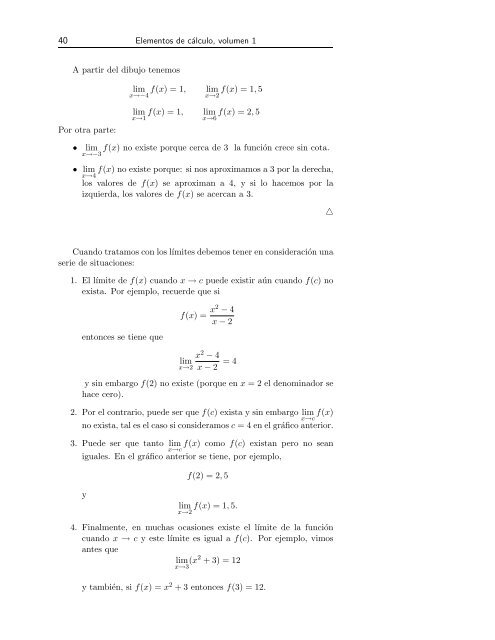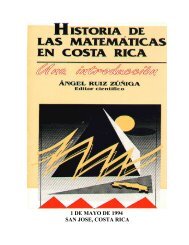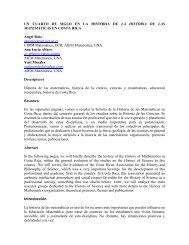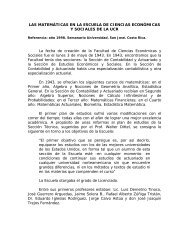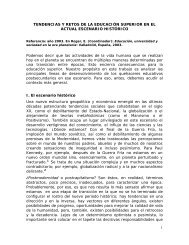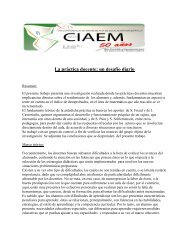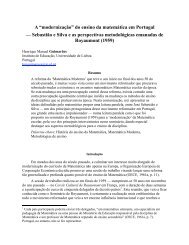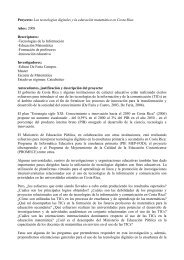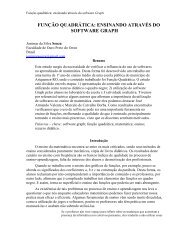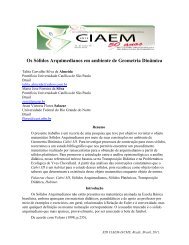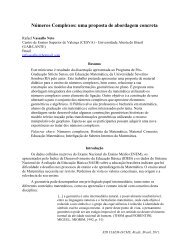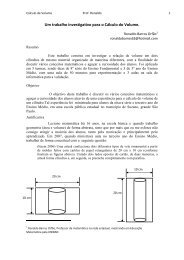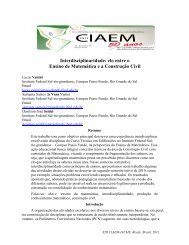You also want an ePaper? Increase the reach of your titles
YUMPU automatically turns print PDFs into web optimized ePapers that Google loves.
40 Elementos de cálculo, volumen 1<br />
A partir del dibujo tenemos<br />
Por otra parte:<br />
lim f(x) = 1, lim f(x) = 1, 5<br />
x→−4 x→2<br />
lim f(x) = 1, lim f(x) = 2, 5<br />
x→1 x→6<br />
• lim f(x) no existe porque cerca de 3 la función crece sin cota.<br />
x→−3<br />
• lim<br />
x→4 f(x) no existe porque: si nos aproximamos a 3 por la derecha,<br />
los valores de f(x) se aproximan a 4, y si lo hacemos por la<br />
izquierda, los valores de f(x) se acercan a 3.<br />
Cuando tratamos con los límites debemos tener en consideración una<br />
serie de situaciones:<br />
1. El límite de f(x) cuando x → c puede existir aún cuando f(c) no<br />
exista. Por ejemplo, recuerde que si<br />
entonces se tiene que<br />
f(x) = x2 − 4<br />
x − 2<br />
x<br />
lim<br />
x→2<br />
2 − 4<br />
= 4<br />
x − 2<br />
y sin embargo f(2) no existe (porque en x = 2 el denominador se<br />
hace cero).<br />
2. Por el contrario, puede ser que f(c) exista y sin embargo lim<br />
x→c f(x)<br />
no exista, tal es el caso si consideramos c = 4 en el gráfico anterior.<br />
3. Puede ser que tanto lim<br />
x→c f(x) como f(c) existan pero no sean<br />
iguales. En el gráfico anterior se tiene, por ejemplo,<br />
y<br />
f(2) = 2, 5<br />
lim f(x) = 1, 5.<br />
x→2<br />
4. Finalmente, en muchas ocasiones existe el límite de la función<br />
cuando x → c y este límite es igual a f(c). Por ejemplo, vimos<br />
antes que<br />
lim<br />
x→3 (x2 + 3) = 12<br />
y también, si f(x) = x 2 + 3 entonces f(3) = 12.<br />
△


